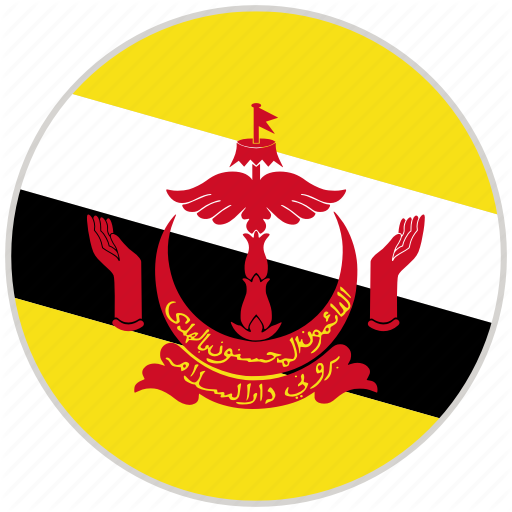Network of East Asian Think-tanks (NEAT)
Memorandum No. 12
Bandung, 2015
EXECUTIVE SUMMARY
I. Introduction
The Network of East Asian Think-Tanks (NEAT) held its 23rd Country Coordinator Meeting (CCM) and 13th Annual Conference (AC) in Bandung, Indonesia on 7-8 September 2015. Attending these two events were representatives of ASEAN Plus Three (APT) countries.
NEAT reaffirms that the goal of community building in East Asia is to promote the welfare and well-being of its people by realizing the East Asian Vision of Peace, Prosperity and Progress. In order to promote an East Asia that is peaceful, community building must be based on universal values, including good governance, the rule of law, democracy, human rights and international law and norms. East Asian countries should promote these values as common goals.
II. Recommendations
Based on its 2015 Working Groups, NEAT respectfully submits recommendation in the following four areas for the consideration of the APT leaders:
1. East Asian Cooperation on Poverty Reduction: Sustainabiilty, Integrity and Capability
East Asian regional cooperation on poverty reduction should be in line with Sustainable Development Goals. The APT countries should further institutionalize cooperation on poverty reduction, utilize multi-channel financing by integrating emerging sources, build development partnership and harmonize regional efforts in poverty reduction, and strengthen capability-building through education, training, and pilot projects. In this regard, NEAT recommends:
- Establishing a Ministers Meeting,
- Developing a post-2015 Action Plan,
- Setting up a Task Force and encouraging village-level pilot projects for APT poverty reduction.
2. Towards Good Urban Planning: Sustainable Development and Better Quality of Life
Integrated urban planning and effective governance are essential to achieving a sustainable balance among various considerations such as economic growth, social progress and environmental protection that facilitates the building of liveable cities for residents. The task of building livable cities is getting urgent as Asia is expected to bear the brunt of more and accelerated population growth in its urban areas in the coming years. To achieve good urban planning, NEAT recommends:
- Involving relevant stakeholders;
- Showcasing best practices and enhancing capacity-building;
- Exploring various financing models and leveragin on relevant international platforms.
3. Maritime Cooperation in East Asia
APT countries are currently faced with multiple challenges related to maritime security, including various transnational crimes. NEAT recommends:
- Establishing a framework of cooperation and cross-sectoral information sharing center;
- Fostering the development of human resources to promote maritime management in accordance with international law;
- Holding an APT Oceans-related Ministerial Meeting and experts’ meetings; and,
- Pursuing the conservation of maritime ecosystem and biodiversity and the effective usage of maritime resources in the region.
4. Towards Seamless Connectivity: Transforming Multi-modal Transport System into Economic Corridors
In achieving seamless connectivity within the ASEAN+3 region, NEAT recognized the importance of prioritizing and synergizing connectivity projects, intrinsic links between the various initiatives of ASEAN and the Plus Three countries, as well as the necessity of bridging the financial gap to meet the regional connectivity needs. NEAT recommends:
- Exploring possibilities of establishing the ASEAN+3 countries as active members of the ACCC under MPAC;
- Enhancing cooperation between multinational investment institutions such as ADB and AIIB;
- Developing a stronger framework for public private partnership in addition to existing PPP infrastructure advisory facilities, as well as encouraging private sector to take lead in conducting connectivity-based feasibility studies; and,
- Strengthening people-to-people linkage by improving border service facilities.
NEAT Memorandum No. 12
Bandung, 2015
I. Introduction
In 2015, NEAT organized four Working Groups (WG). The first is WG on East Asian Cooperation on Poverty Reduction: sustainability, integrity and capability, sponsored by NEAT China that had the workshop in Beijing China, on 10 July 2015. The second is WG on Towards Good Urban Planning: Sustainable Development and Better Quality of Life, sponsored by NEAT Singapore, with the workshop held in Singapore, on 21 July 2015. The third is WG on Maritime Cooperation in East Asia, sponsored by NEAT Japan, which conducted the workshop on 5 August 2015 in Tokyo, Japan. The last is WG on Towards Seamless Connectivity: Transforming Multi-modal Transport System into Economic Corridors, sponsored by NEAT Thailand, that had the workshop on 21 August 2015 in Bangkok, Thailand.
II. Recommendation
Based on the Working Groups’ reports, NEAT respectfully submits recommendation in the following four areas for the consideration of the APT leaders:
1. East Asian Cooperation on Poverty Reduction: Sustainabiilty, Integrity and Capability
In the context of the post-2015 Development Agenda, East Asian regional cooperation in poverty reduction shall not only eliminate absolute poverty, narrow development gap and promote economic growth, but also aim at Sustainable Development Goals (SDGs) to achieve comprehensive and balanced development, social justice, environmental protection and good governance.
In order to achieve these goals, regional cooperation on poverty reduction should be inclusive, recipient-oriented, and pragmatic. Inclusive means both absolute and relative poverty should be reduced. Inclusive also means more social or market participation in reducing absolute as well as relative poverty. Recipient-oriented means that cooperation programs should be customized to meet different conditions, development levels and models. Pragmatic means efforts should be made to produce tangible benefits out of poverty reduction projects to increase effectiveness and efficiency of cooperation.
Based on the past experiences and new challenges, the following policy proposals are made to achieve the above-mentioned goals, which attach great importance to sustainability, integrity and capability-building in regional cooperation on poverty reduction.
a. Further institutionalize APT cooperation on poverty reduction.
- Utilize existing mechanisms and consider establishing an APT Ministers Meeting on poverty reduction. An APT Ministers Meeting on poverty reduction should be established, which shall be held at least once a year as the major mechanism for policy coordination and decision-making in regional cooperation on poverty reduction. In order to give full play to the Meeting, supporting mechanisms should also be put in place as soon as possible.
- Develop a post-2015 Action Plan for APT Poverty Reduction Cooperation. Being in line with the post-2015 Development Agenda and aiming at the SDGs in the region, the Plan should identify specific goals, strategic roadmap, priority areas, timetables and implementing measures regional cooperation on poverty reduction and sustainable development for the 2016-2030 period.
- Set up an APT Task Force for poverty reduction. An APT Task Force should be set up at an early date to conduct joint study and to provide intellectual support for official cooperation. The Task Force composed of leading experts from APT countries shall carry out relevant research by phases according to the Action Plan and report to the Ministers Meeting.
b. Innovate financing models and integrate emering sources and actors
- Realize paradigm shift of development finance from official development assistance to multi-channel financing. Great importance shall be attached to private investment, domestic resources and emerging economies and their initiatives. Although official development assistance is still a main resource for financing poverty reduction and sustainable development, it is important to leverage and catalyze private flows and domestic resources.
- Explore the feasibility of establishing an APT Development Fund. One option can be making good use of the APT Cooperation Fund. The Development Fund can be used for regional cooperation projects on poverty reduction and sustainable development.
- Promote the coordination among relevant international institutions in regional infrastructure development, for instance, the Global Infrastructure Facility of the WB, the ADB and the AIIB.ng.
c. Build development partnership and integrate regional efforts in poverty reduction.
- Build effective and interactive public-private cooperative partnership (PPP). Encourage extensive participation of public and private sectors, civil society, and non-governmental organizations in regional poverty reduction and development projects.
- Nurture a win-win development culture between the donors and beneficiaries under multilateral governance frameworks.
- Develop regional network among development and poverty reduction agencies with national focal points. Regional networking should be built and strengthened with a view to better coordinating and allocating resources and practices under various mechanisms.
- Set up an APT Forum for Social Development and Poverty Reduction. The Forum should bring all parties concerned and convene annually to share experience and exchange views on further promoting poverty reduction and sustainable development.
- Set up a database for ASEAN+3 poverty reduction, where regional countries can constantly update information, release policies and track the process of poverty reduction at national and regional levels. Updated information and accurate data is very important for planning and policy-making in poverty reduction.
d. Strengthen capability-building through education, training and pilot projects.
- Further promote regional cooperation on education and training, especially vocational-education and skill-training, with an aim of increasing employment. Such training and education programs should be regularized, well planned and guaranteed by regional cooperation fund. Sustainable and inclusive development in the region cannot be achieved without the capability-building of the poor population.
- Further promote higher education in sustainable development to build intellectual reserve for long-term regional cooperation and community building. The advanced economies in the region shall provide scholarships and degree programs concerning poverty reduction and sustainable development to less developed ones. The degree programs for poverty reduction and sustainable development should, among other, include course in entrepreneurship.
- Carry out village-level pilot projects. Rural poverty reduction is a major challenge for most regional countries. At the 17th APT Summit in 2014, China promised to fund Village-level Demonstration Program for Cooperation on Poverty Reduction. Such programs have been proven effective in China’s domestic practice, which have improved the basic infrastructure of villages and hence equipped the villagers with basic capabilities and conditions for development. Village-level pilot or demonstration projects should be developed and supported by regional countries to lift a large number of our people out of absolute poverty, and prepare them for sustainable development.
2. Towards Good Urban Planning: Sustainable Developmen and Better Quality of Life
The APT governments need to work closely together on urban planning to achieve a sustainable balance among various considerations such as economic growth, social progress and environmental protection that facilitates the building of liveable cities for residents. Together, they can develop greater synergies and mitigate shortcomings in the area of urban planning. The task of building liveable cities is getting urgent as Asia is expected to bear the brunt of more and accelerated population growth in its urban areas in the coming years. The following are key recommendations to promote APT cooperation on urban planning:
a. Demonstrate political will and commitment by adopting a whole-of-government approach along with long-term integrated design in the planning and development of a city.
b. Ensure sustainable urban planning outcomes by combining the pursuit of a robust urban economy with social and environmental considerations, and disaster resilience.
c. Promote an open and inclusive approach by involving relevant stakeholders to encourage joint ownership and pooling of resources.
d. Undertake pilot/joint projects or compile a collection of case studies to better share knowledge, expertise and experience on urban planning among the APT countries.
e. Enhance capacity building especially training of skilled manpower on urban planning.
f. Explore alternate financing solutions such as Public-Private Partnerships (or PPP) or other financial institutions in urban planning apart from traditional sources of government funding.
g. Leverage on international or global platforms such as the World Cities Summit (held biennially in Singapore - next one to be held in July 2016) and the Habitat III Conference (by the United Nations to be held in Ecuador in October 2016) to explore and share practical lessons and ways forward for sustainable urban planning and development.
3. Maritime Cooperation in East Asia
a. To establish a framework of cooperation and cross-sectoral information sharing among the countries in the areas of maritime crime1, navigation safety, environment protection, disaster management and maritime development in East Asia.
b. To establishing an information sharing framework among the countries, to enhance human and institutional capacity building for relevant bodies in charge of maritime safety and security in order to combat maritime crimes.
c. To foster development of human resources on maritime management and maritime policy to address maritime issues in accordance with international law in each country of the region and facilitate cooperation among the countries for such efforts.
d. To seek the possibility of establishing a single point of contact in each country on maritime management in the region and pursue streamlined communication channels.
e. To jointly promote the development of the East Asia maritime cooperation, to explore the possibility of holding an APT Oceans-related Ministerial Meeting and holding a maritime experts’ meeting to strengthen maritime cooperation among East Asian countries. Also to promote research exchange among research institutes in East Asia.
f. To advance discussions on the governmental level towards the establishment of an integrated information sharing center on maritime cooperation in East Asia.
g. To pursue the conservation of maritime ecosystem and biodiversity and the effective usage of maritime resources in the region through methodologies, such as Area Capability Cycle.
___________________________
1 Major examples of maritime crimes are piracy, maritime terrorism, drug trafficking, human smuggling, maritime theft and fraud, illegal fishing and offences against the marine environment.
4. Towards Seamless Connectivity: Transforming Multi-modal Transport System into Economic Corridors
a. Reaffirm the importance of connectivity as a critical means for growth by Governments so as to enable them to re-prioritize connectivity projects, relative to other national projects.
b. Explore the possibility of collaboration between the ADB and the AIIB, given the magnitude of the funds needed for infrastructure investment. The role of multilateral investment institutions such as the ADB and the AIIB is extremely important in supporting the development of connectivity projects. Their involvement would help fill in the financial gaps that may exist in some of the countries involved. Efforts to strengthen and sustain regional sources of fund are important in funding infrastructure development in the region.
c. Propose the inclusion of Plus Three countries as active members, rather than observers, of the ACCC, as the establishment of the ASEAN Connectivity Coordinating Committee (ACCC) under the MPAC, the Belt and Road initiative and the Partnership for Quality Infrastructure initiative are so closely interconnected with the MPAC. Asian countries are known to have enormous domestic savings and foreign exchange reserves. A mechanism should be established so that these resources could be properly utilized to finance the development of infrastructure needed to enhance connectivity. Setting up such mechanism would entail creating an Enabling Environment to accommodate private investment, in which cooperation agreements, legal and regulatory frameworks, investment planning, institutional arrangements and a functional domestic capital market need to be developed.
d. Pursue the development of a stronger framework for Public Private Partnerships (PPPs), in addition to the existing PPP Infrastructure Advisory Facility. In light of the fact that the private sector has resources that can be tapped into for connectivity projects, which are often considered public goods. One recommendation is to establish a formal regional platform to exchange PPP knowledge and experience, such as a knowledge-based Regional PPP Center of Excellence. Another suggestion is for countries with successful PPP experiences (including Japan) to share their expertise with other countries. Yet another suggestion is for all countries involved, to establish national-level units that would oversee PPP funding opportunities within the region and function in consultation with a Regional PPP Center of Excellence.
e. Encourage the private sector to take the lead in conducting connectivity-based feasibility studies and to submit a project proposal to the government, regardless of whether such proposal is being solicited, so that, in realizing the benefits of connectivity projects, they have a stronger incentive to form a partnership with the government. The East Asia Business Council should be tasked with a greater role of promoting awareness of possibilities of developing ASEAN infrastructure among private investors. In addition, governments should ensure that private-sector involvement in connectivity projects serves not only business interests but also the purpose of economic development.
f. Extend the evaluation of feasibility of infrastructure development projects beyond mobilization of resources. It should address the political dynamics within each country involved, realizing the complexity of policy-making processes at the national and the international levels.
g. Incorporate the enhancement of maritime infrastructure connection with the implementation of projects under the MPAC and the Belt and Road. As to improve overall transport system in order to save cost and time and make regional connectivity truly seamless.
h. Further develop and enhance border service facilities in terms of their accessibility, availability of basic amenities as well as efficiency, the last of which is reflected in the length of waiting time at the border. In order to strengthen people-to-people linkages.
i. Promote a more concerted effort in synergizing the Belt and Road Initiative and Partnership for Quality Infrastructure initiative together with existing connectivity plans in ASEAN, particularly the MPAC. The principle of ASEAN Centrality should apply in such efforts.
Rapporteur: NEAT Indonesia
Chair of the 23rd CCM
Dr. Evi Fitriani
Country Coordinator of NEAT Indonesia











.png)



.png)




